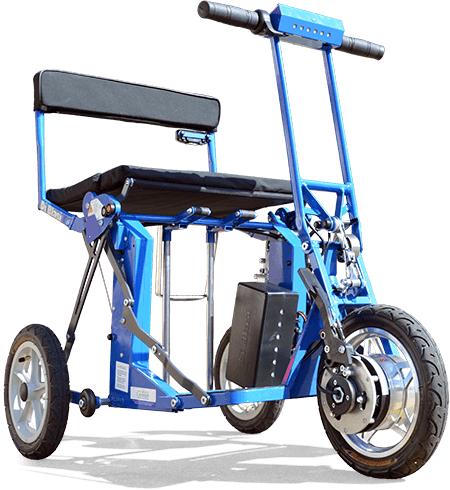The Main Benefits of Owning a Portable Mobility Scooter
Mobility scooters play an extremely important role in many people’s daily lives. Today, there are many more makes and models on the market than ever before. As technology becomes more advanced then so does everything else around it. At first glance, the most obvious advantage of a portable mobility scooter, as opposed to a road class type, is the size and portability.
With a Road Class scooter, your options are limited. As it's one big unit, you'll need to have the extra space to store it in a shed or garage. A lightweight mobility scooter can be taken apart and stored in a smaller space. Here are a few benefits of choosing a portable mobility scooter.
 Storage
Storage
As with all mobility scooters, having a dry place to store them is a priority. This obviously becomes more difficult in relation to the size of your scooter. If you’re limited for space, then products such as a pop-up scooter shed (which is pretty much like a tent) or scooter storage box might be a good option.
The great thing with portable mobility scooters is that they can be easily dismantled with little effort. Most of the latest models can be taken apart in a matter of seconds - without any tools! That way, you’ll be able to store it in a small storage area or even in your car boot.
Some have the added advantage of folding up in one piece. Whether this is done manually like on the i3 mobility scooter, or at the touch of a button with models such as the Di Blasi R30, it certainly provides you with more options.
Further Transportation
The small size of boot scooters makes them perfect for further transportation. Just to give you an idea, the majority will take up about the same space as a small pushchair. You'll also find that they are, in most cases, accepted on a range of different travel methods including bus, train, coaches, aeroplanes, and cruise ships. Most importantly, you'll be able to travel by car with your scooter in the boot ready and waiting when you need it.
Battery
When the manufacturer of portable mobility scooters is in the design process they will take a lot of time and effort to source the lightest materials. This is no different with the type of battery used. Lithium Ion batteries have been a revelation in the development of lightweight mobility scooters. With the “classic” Road Class scooter, you’ll quite often have to charge the battery while onboard due to the weight. With a portable mobility scooter, you’ll have the choice to charge the battery on or off-board. Again, this makes things much more convenient.
Manoeuvrability
The manoeuvrability on these type of scooters is second to none. Due to the size of portable mobility scooters, the wheels are often close together. This provides an acute turning radius which helps when driving around crowded streets or a house with limited space.
The improvement in battery technology has meant that smaller mobility scooters are able to travel further. This makes portable mobility scooters the ideal companion to do your shopping in busy supermarkets, crowded high streets, or for long days out with family and friends.
In this article, we’ve outlined a few ways in which a portable mobility scooter could be the right fit for you. Aways remember that portable mobility scooters usually have a top speed of 4mph, meaning they can only be used on the pavement. If you’re looking for something to use on the road, then you’ll want to consider an 8mph scooter. Learn more about the difference between Class 2 and Class 3 mobility scooters.
At Cavendish, we’d always recommend that you visit your local showroom to make sure you feel comfortable with your choice. More importantly, a mobility professional can show you how to use the scooter safely. For more information please contact us on 02392 255600, we’d be more than happy to help.

What battery can I use for my lightweight mobility scooter? Which battery is best?

Taking your lightweight mobility scooter on an aeroplane. Thinking of flying?

Do we need a Highway Code for mobility scooter users? Mobility Highway Code

What does a home demonstration involve? Home Demonstrations
Read more mobility articles



